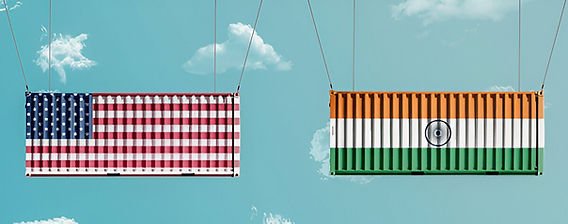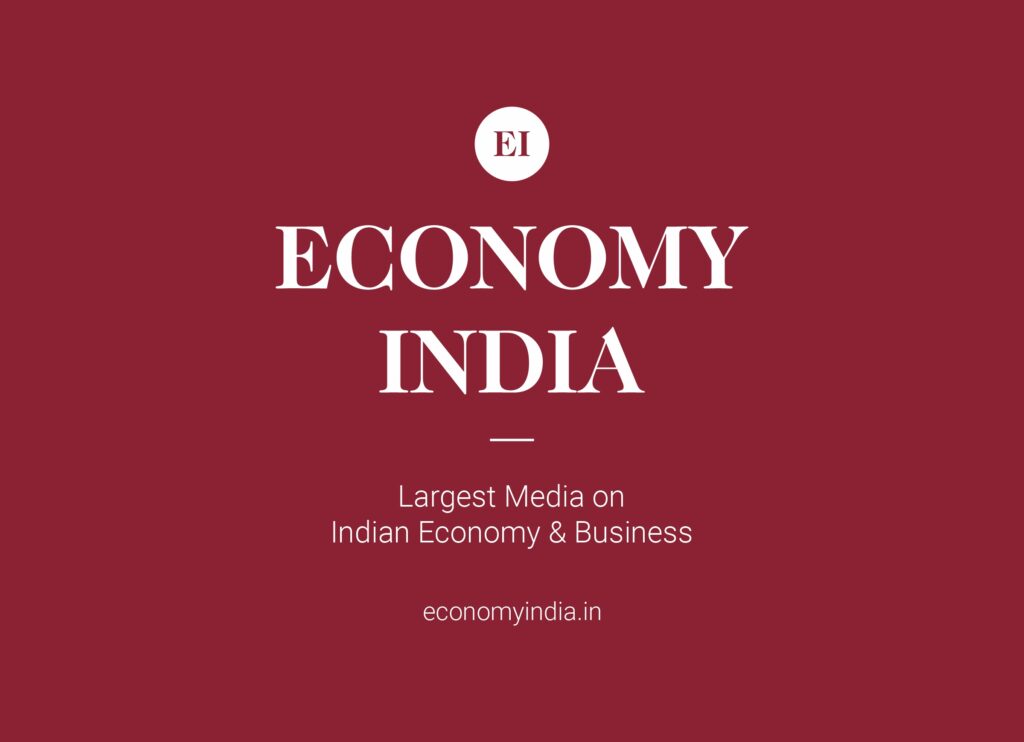Citing India’s continued oil trade with Russia, Trump administration imposes steep penalties; Indian government vows to safeguard national interests.
WASHINGTON / DC / NEW DELHI I Economy India: In a significant development that could strain trade relations between two major democracies, former U.S. President Donald Trump has signed an executive order imposing an additional 25% tariff on Indian imports, raising the total tariff rate to 50%. The decision, which Trump attributes to India’s continued oil imports from Russia, is set to take effect from August 27, 2025.
The executive order signed on Wednesday specifically cites India’s energy trade with Russia as the primary reason behind the punitive economic measure. The White House released a statement noting that India is “indirectly fueling Russia’s war machinery against Ukraine,” thus warranting “economic consequences.”
Trump’s administration had earlier, on July 30, announced the first 25% tariff on India. With the fresh announcement, the total cumulative tariff on Indian goods entering the U.S. market now stands at 50%.

India Reacts Sharply, Calls Action Unwarranted
Reacting strongly, the Ministry of External Affairs of India condemned the move, calling it “unjust, unfair, and unnecessary.” In a formal statement, the ministry asserted, “India makes decisions based on market dynamics. The U.S. action is unfortunate and inconsistent with the principles of fair trade.”
The Indian government further emphasized that it would take “necessary steps to protect its national interests,” though it did not immediately specify what form these retaliatory measures might take.
Executive Order Details: Selective Exemptions
The executive order, made public late Wednesday evening, includes certain exemptions to the blanket tariff:
“In select cases, where Indian goods have already been shipped or are en route before the effective date, exemptions will apply,” the order states.
It also notes that products already exempted under a previous April 2025 executive order—including semiconductors, smartphones, computers, pharmaceuticals, automotive parts, copper, and other metals and minerals—will continue to remain duty-free.
However, the administration warned that it reserves the right to modify tariff rates or expand the list of taxable items in the future depending on “strategic needs.”
Trump Accuses India of Financing War
Speaking to reporters at the White House, Trump accused India of indirectly financing Russia’s war efforts in Ukraine through its energy purchases. “India is helping fund Russia’s war machine, knowingly or unknowingly. That’s unacceptable to the United States,” he said.
He added that the tariff was necessary to protect U.S. geopolitical and economic interests.
This rhetoric echoes Trump’s earlier position during his presidency from 2016 to 2020, when he frequently criticized countries including China and India for what he considered “unfair trade practices.”

U.S. Ban on Russian Oil Since 2022
The move comes against the backdrop of a complete U.S. ban on Russian oil imports, which has been in effect since March 2022, following the Russian invasion of Ukraine. While the U.S. has called upon its allies to cut energy ties with Russia, India has continued purchasing Russian crude at discounted rates, citing national energy needs and strategic autonomy.
India has maintained that it does not support the war and has called for a peaceful resolution but has not joined Western sanctions against Russia.
Tariff Exemptions Still in Play
Despite the new 25% levy, several high-value Indian exports to the U.S. remain unaffected:
- Pharmaceuticals
- Smartphones and electronics
- Semiconductors
- Industrial metals and minerals
- Automotive components
Analysts suggest that these exemptions reflect the deep integration of Indian goods into the U.S. supply chain, especially in critical sectors like healthcare and technology.
India–U.S. Trade Under Pressure
India and the U.S. have a robust trade relationship, with bilateral trade crossing $180 billion in 2024. However, the recent developments have created uncertainty, particularly for Indian exporters who depend heavily on the U.S. market.
India’s pharmaceutical industry, which exports over $7.5 billion worth of products annually to the U.S., is especially concerned.
Trump Threatens 250% Tariff on Medicines
In a related development, Trump, in an interview with CNBC, warned that he might impose up to 250% tariff on Indian pharmaceutical products if elected for another term.
“We want our drugs to be made in the U.S. We can’t keep depending on India and China for essential medicines,” Trump said, adding that the new tariff would be phased over 18 months, starting with a modest duty and increasing to 150% and then 250%.
This threat has sent shockwaves through the Indian pharma industry, which supplies about 40% of the generic drugs consumed in the U.S., according to the U.S. Food and Drug Administration (FDA).
Economic Fallout: Industry Fears Mounting
Industry associations in India have expressed concern over the economic fallout of these measures. “This is a wake-up call,” said a spokesperson for the Federation of Indian Export Organisations (FIEO). “Such steep tariffs could severely impact MSMEs and large exporters alike.”
The pharma sector, which has seen consistent growth in the U.S. market, could face pricing pressure and potential loss of market share to European or domestic U.S. manufacturers.

Experts Call for Diplomatic Resolution
International trade experts have urged both governments to engage in urgent dialogue to de-escalate the situation. “This tit-for-tat approach will hurt consumers and businesses on both sides,” said Dr. Rajan Menon, a global trade policy analyst. “Diplomacy must take precedence over economic coercion.”
What Happens Next?
While the tariffs will officially come into force on August 27, several key questions remain unanswered:
- Will India impose retaliatory tariffs?
- Could this impact India-U.S. strategic ties, including defense cooperation?
- Will the move influence India’s stance on Russia?
- How will the global pharmaceutical and tech supply chains be affected?
As tensions mount, the India-U.S. economic relationship faces one of its toughest tests in recent years. While Washington’s focus remains on curtailing Moscow’s global support, New Delhi is determined to assert its strategic and economic independence
Whether this escalates into a full-blown trade war or is resolved through backchannel diplomacy will be keenly watched in the coming weeks.
(Economy India)






